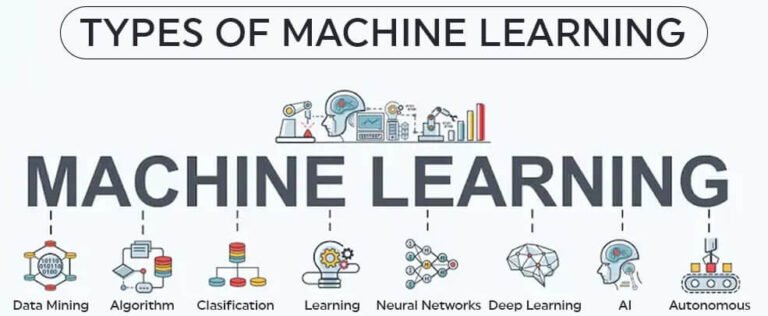
In this cutting -Edge technology , Machine learning has revolutionized various industries and businesses are eager to implement . It enables computer systems to learn, improve and make data-driven predictions automatically over time without being explicitly programmed. By analyzing large volumes of data, machine learning algorithms can uncover hidden insights and patterns to solve real-world problems.
It’s important to understand what are the different categories of machine learning exist and their capabilities. Based on the nature of available data and problems they aim to solve, machine learning models are categorized into three main branches – supervised, unsupervised and reinforcement learning.
Understanding the fundamentals of various machine learning types will allow businesses to apply the appropriate algorithms and techniques for their specific needs and data infrastructure. This blog post provides an overview of the common types of machine learning, their primary use cases and key differences.
Unlike supervised and unsupervised learning, reinforcement techniques focus on online performance rather than offline learnings. They continually refine behaviors by factoring in dynamic responses from environments.
Reinforcement learning has promising applications in:
Criteria | Labeled datasets | Unlabeled datasets | Optional rewards |
Data labels | Supervised Learning | Unsupervised Learning | Reinforcement Learning |
Goal | Predict outcomes accurately | Discover hidden patterns | Maximize rewards |
Learning approach | Generalize from examples | Infer from datasets | Act and refine |
Feedback | Prediction error | Inherent structure | Environment response |
Business application Classification | forecasting Segmentation | Segmentation | anomaly detection Decision optimization |
Performance metric | Predictive accuracy | Cluster cohesion novelty | Reward over time |
This table summarizes how the different categories of machine learning algorithms function, the data requirements and overall objective. While supervised learning analyzes samples and feedback, unsupervised seeks underlying trends and reinforcement continually interacts with environments.
Understanding types of machine learning algorithms like supervised, unsupervised and reinforcement models allows appropriate selection and application according to problem context and data infrastructure. Going beyond buzzwords, knowing the precise differences in their approach, objectives and metrics provides clarity for business leaders. With this foundation, companies can adopt machine learning effectively and tap into its disruptive potential.